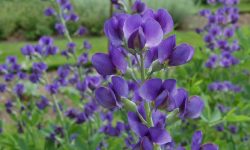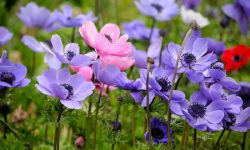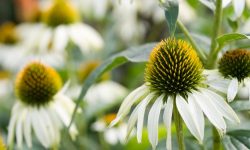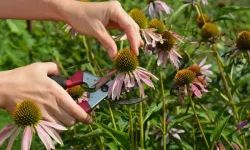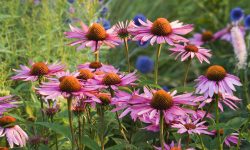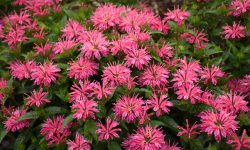Every garden has its heroes—plants that thrive with little fuss, bloom with passion, and give back more than they take. Salvia is one of those heroes. With its long, graceful spires and an almost endless palette of colors, salvia brings life, movement, and magic to any landscape. Whether you’re tending a pollinator haven, a cottage garden, or a modern border, salvia offers unwavering beauty and performance from spring to fall. Watching its blossoms sway in the breeze and invite hummingbirds and butterflies is one of gardening’s quietest yet most rewarding joys.
But amidst its beauty comes a practical question every gardener asks: how long does salvia last? Understanding the lifespan of your salvia—whether it’s an annual that gives one glorious season or a perennial that returns for years—empowers you to plan, plant, and care with purpose. In this in-depth guide, you’ll explore the full journey of salvia, from planting to blooming, and from thriving to fading, with tips to help you extend its vibrant life and enjoy its presence in your garden season after season.
Understanding the Different Types of Salvia
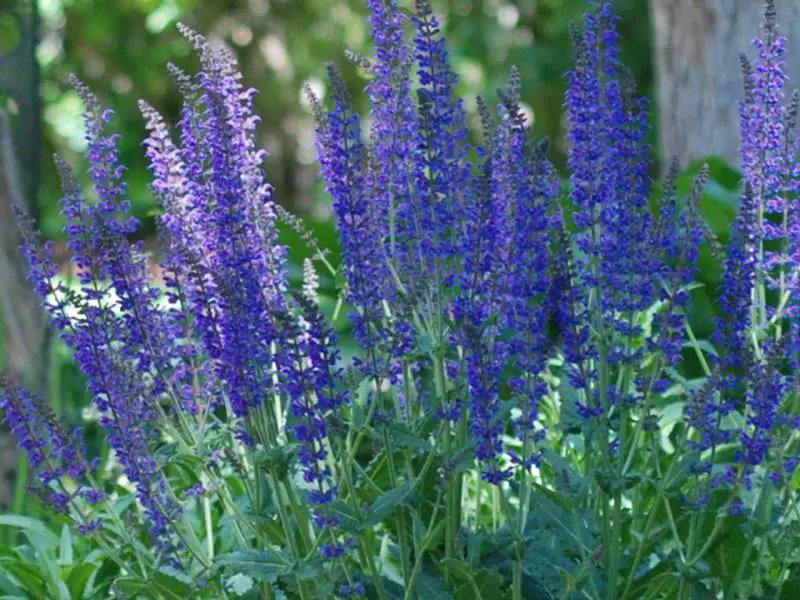
Annual Salvia
Annual salvias are the vibrant bursts of color that bring immediate charm to summer gardens. Salvia splendens, often known as scarlet sage, dazzles with bold red spikes that light up flowerbeds and containers. Salvia coccinea, with its delicate form and softer hues like coral and pink, draws pollinators by the dozen. These types grow fast and bloom profusely, pouring all their energy into a single glorious season.
Because they complete their entire life cycle in just a few months, annual salvias require little commitment—but deliver plenty of impact. Once the first frost arrives, these plants typically die back completely. While they won’t survive the winter outdoors, you can save their seeds or buy new starts each spring. In some warm regions, they may self-seed and return naturally the following year, offering a pleasant surprise for observant gardeners.
Annual salvias are perfect for those who love to refresh their garden design each season. Their short lifespan doesn’t make them less valuable—it makes their presence feel even more magical, like a vivid summer memory that stays with you long after the petals fall.
Perennial Salvia
Perennial salvias are the true backbone of many gardens, offering reliable color and structure year after year. Unlike their annual cousins, these plants take a longer view—building strong roots, developing fuller shapes over time, and rewarding patience with seasonal brilliance.
Salvia nemorosa and Salvia x sylvestris are beloved for their cool-toned spikes, including purples, blues, and soft pinks. Salvia farinacea, often known as mealy cup sage, enchants with silvery stems and a never-ending stream of blooms from early summer to fall. These perennials thrive in well-drained soil and full sun, and once established, they are drought-tolerant and low-maintenance.
In cold-winter regions, perennial salvias may die back to the ground, resting beneath the soil until the warmth of spring awakens them. With proper care—like cutting back spent flowers to encourage reblooming, dividing clumps every few years, and providing occasional compost—many of these salvias can live for five years or longer. Their longevity, combined with their resilience and ecological value, makes them a favorite among gardeners who want beauty that returns with each new season.
Tender Perennial or Half-Hardy Salvia
Some of the most exotic and luxurious salvias belong to the tender perennial group. These plants blur the line between annual and perennial, depending on where you live. In USDA zones 8 and above, they can overwinter in the ground and reemerge in spring like true perennials. In colder zones, they need extra protection or must be treated as annuals.
Salvia guaranitica, also known as anise-scented sage or “Black and Blue,” captivates with deep cobalt flowers and nearly black calyxes. It’s a hummingbird magnet and a stunning focal point in late-summer borders. Salvia leucantha, or Mexican bush sage, boasts velvety purple-and-white spikes that sway dramatically in the breeze.
Though these salvias are not fully frost-hardy, they can be overwintered indoors in containers or protected with heavy mulch in mild climates. Some gardeners dig them up in fall and bring them into a garage or greenhouse to rest through the winter. If properly cared for, they will reawaken in spring and grow even larger and more robust each year.
Tender perennial salvias are ideal for gardeners seeking drama and bold color—plants that feel tropical and exuberant, even in temperate gardens. With a little planning and protection, they can be kept alive well beyond a single season, becoming treasured parts of the garden year after year.
Factors That Influence the Lifespan of Salvia
Climate Suitability
Salvia thrives when grown in climates that suit its nature. Some varieties, like Salvia greggii, flourish year-round in USDA zones 7 to 10, where winters are mild and frosts are rare. But in colder regions, salvias like Salvia leucantha, although technically perennial, must be treated as annuals or protected through winter to survive. Understanding your hardiness zone isn’t just a detail—it’s the key to knowing whether your salvia will be a fleeting summer show or a long-term garden companion.
Soil and Drainage
The soil your salvia grows in will determine how strong its roots are and how long the plant can thrive. Salvias detest soggy soil. Without good drainage, their roots are vulnerable to rot, especially during the wet, cold months. Mixing compost or grit into heavy clay soil can improve drainage dramatically, allowing oxygen to flow freely to the roots. Healthy roots mean a stronger, longer-living plant that rewards you with lush growth and vibrant flowers year after year.
Sunlight Exposure
Sunlight is fuel for salvia. Most species crave the brilliance of full sun and perform best with at least six hours of direct light each day. In shady areas, salvias stretch awkwardly toward light, lose their color intensity, and flower sparsely. With generous sunshine, though, they stand tall, bloom profusely, and enjoy a longer, more productive life. If you want your salvia to reach its full potential, give it the sunlight it longs for.
Watering Practices
Watering salvia is an art of balance. While mature plants are impressively drought-tolerant, they do not appreciate being either overwatered or left parched for too long. Newly planted salvias need consistent moisture to establish roots, but once they’re settled, less is more. Allowing the soil to dry slightly between deep waterings helps prevent fungal disease and extends the plant’s vigor and longevity. Over time, this rhythm supports a healthy root system and encourages long-term resilience.
Pruning and Deadheading
A simple snip can mean the difference between a fading plant and a flourishing one. Pruning salvias—whether cutting back spent flower spikes or shaping the entire plant—stimulates fresh growth and prolongs blooming. Deadheading not only keeps the plant looking tidy but also redirects its energy from seed production to new flower formation. Season after season, this care routine strengthens the plant and extends its natural lifespan, ensuring salvia remains a vibrant presence in your garden.
How Long Salvia Lasts by Variety
Each type of salvia has a different expected lifespan depending on whether it is grown as an annual, perennial, or tender perennial. Knowing the specific variety you’re growing will help you set realistic expectations for how long it will thrive in your garden.
Salvia splendens (Scarlet Sage)
Often grown as an annual in most climates, Salvia splendens typically lasts for one season. It is planted in spring and produces vibrant blooms throughout summer and fall until the first frost ends its life cycle. In frost-free zones, it may behave like a short-lived perennial, surviving for a couple of years with care.
Salvia coccinea (Texas Sage)
Salvia coccinea is considered an annual in colder regions, but in USDA zones 8–10, it may act like a short-lived perennial. Even where it self-seeds freely and returns each year, individual plants usually last one growing season to two years at most.
Salvia nemorosa
This hardy perennial can live for up to 5 to 7 years with regular pruning and division. It’s a low-maintenance variety that returns reliably each spring and rewards gardeners with long-lasting, spiky blooms if grown in full sun and well-drained soil.
Salvia guaranitica (Anise-Scented Sage)
As a tender perennial, Salvia guaranitica can live several years in zones 8 and above, especially with winter protection like mulch. In colder areas, it’s treated as an annual unless dug up and overwintered indoors. When protected well, it can persist for 3 to 5 years or more.
Salvia greggii (Autumn Sage)
Known for its resilience, Salvia greggii can live for up to 10 years in warm, dry climates. It prefers USDA zones 7 to 10 and responds well to pruning, which keeps it compact and healthy. Its longevity makes it a favorite for xeriscaping and pollinator gardens.
Salvia farinacea (Mealycup Sage)
This perennial is often grown as an annual in cooler climates. However, in warm zones like 8–10, it can live for several years, especially when cut back in winter and protected from frost. With good care, plants may last 3 to 5 years or more.
Extending the Life of Your Salvia
Although some salvias have a naturally short lifespan, there are several ways to maximize their longevity and bloom potential.
Mulching for Winter Protection
Applying a layer of mulch around the base of perennial salvias in the fall helps insulate their root systems against freezing temperatures and sudden temperature fluctuations. This is especially important in USDA zones 5 to 7. Organic mulch like straw, pine needles, shredded bark, or compost also suppresses weeds and retains soil moisture. Be sure to apply mulch after the ground has cooled, typically after the first hard frost, and keep it a few inches away from the crown of the plant to prevent rot.
Dividing Perennial Clumps
Perennial salvia varieties, such as Salvia nemorosa or Salvia pratensis, can become woody and crowded after a few years. Dividing the clumps every 3 to 4 years in early spring or fall revives plant vigor, encourages better airflow, and reduces the risk of disease. To divide, dig up the entire clump, separate the root ball into smaller sections using a clean knife or spade, and replant them in enriched, well-drained soil. Water the new divisions thoroughly and mulch around them for a healthy start.
Fertilizing Wisely
While salvias are generally low-maintenance, they benefit from a modest nutrient boost in spring. Use a slow-release balanced fertilizer (such as 10-10-10) or incorporate compost into the soil to provide essential nutrients. Avoid high-nitrogen fertilizers, which promote excessive foliage at the expense of flowers. During the blooming season, a light monthly feeding with a phosphorus-rich fertilizer can enhance flower production, especially in container-grown varieties.
Overwintering Indoors
Tender salvias like Salvia guaranitica or Salvia leucantha are sensitive to frost and should be brought indoors before nighttime temperatures drop below 40°F (4°C). Gently dig up the plant, trim it back to reduce stress, and pot it in well-draining soil. Place the pot in a cool, bright spot—such as a south-facing window or unheated sunroom—with good air circulation. Reduce watering to keep the soil just barely moist, and do not fertilize during winter dormancy. In spring, acclimate the plant gradually to outdoor conditions before replanting.
Signs Your Salvia Is Reaching the End of Its Life
Fewer Blooms
A dramatic drop in the number or vibrancy of flowers is often one of the first signs your salvia is nearing the end of its life. While blooming can naturally decrease with age, it may also result from depleted soil nutrients, root congestion, or a decline in overall plant vigor. If deadheading and fertilizing no longer stimulate blooming, it’s a strong indication the plant may be past its prime.
Woody or Leggy Growth
As salvias mature, especially perennials like Salvia nemorosa or Salvia guaranitica, the lower stems can become woody and bare, while the top growth stretches out and becomes spindly. This legginess often signals that the plant’s energy is declining or that it hasn’t been pruned frequently enough to encourage bushy, vigorous growth. Once the plant loses its compact form and stops responding well to pruning, its lifespan may be winding down.
Persistent Pest or Disease Issues
If your salvia is repeatedly suffering from aphids, spider mites, mildew, or stem rot—despite good care and treatment—it may be a sign the plant’s immune defenses are weakening. Aging or stressed salvias are more vulnerable to pests and pathogens, especially if the soil has become compacted or drainage is poor. Chronic health problems often point to irreversible decline and signal that propagation or replacement may be the best option.
How to Replace and Replant Salvia
When your salvia shows signs of decline, replacing it can breathe new life into your garden. Start by carefully removing the old plant, ensuring you dig out the entire root system. Clear away old mulch and loosen the soil to prepare for replanting.
Enrich the soil with compost or aged organic matter to replenish nutrients. If the old salvia suffered from disease or pests, consider rotating to a new spot in the garden.
Choose a new salvia variety that suits your garden’s light, climate, and style—whether you want a compact annual for containers or a drought-tolerant perennial for pollinator borders. Plant it at the same depth as in the pot, firm the soil gently, and water well.
Add a light mulch layer, keeping it away from the stem, and care for the plant with regular watering until established. With the right start, your new salvia will thrive, continuing the legacy of color and life in your garden.
Frequently Asked Questions About Salvia Lifespan and Care
How long does salvia typically live?
The lifespan varies by variety. Annual salvias like Salvia splendens live only one growing season. Perennial types such as Salvia nemorosa or Salvia greggii can thrive for 3 to 5 years or more if cared for well. Over time, even perennials may decline and need to be divided or replaced.
What’s the best way to tell if my salvia is dying?
Key signs include fewer flowers, leggy or woody growth, and recurring issues with pests or disease. If the plant doesn’t bounce back after pruning or good care, and it looks sparse or unhealthy, it’s likely nearing the end of its life cycle.
Can I grow new salvia from an old plant?
Yes, salvia is easy to propagate. Take softwood or semi-hardwood cuttings in late spring or early summer before the old plant fully declines. This allows you to enjoy the same variety for years to come without buying new plants.
Should I replace salvia in the same spot?
You can replant in the same area if the original plant wasn’t affected by major diseases. Be sure to improve the soil with compost and ensure good drainage. If the old plant struggled with pests or fungal issues, choose a different location for healthier growth.
How do I keep my perennial salvia healthy for as long as possible?
Prune back after each bloom cycle to encourage new growth, divide the plant every few years, and mulch in winter to protect the roots. Avoid overwatering and over-fertilizing. Full sun and well-drained soil are essential for a long-lasting, vibrant salvia.
Conclusion
So, how long does salvia last? The answer varies depending on the species, climate, and care it receives. Annual salvias typically live for one season, while perennial types can brighten your garden for several years. By choosing the right variety for your region, maintaining healthy growing conditions, and performing regular upkeep, you can enjoy the vibrant colors and pollinator-friendly blooms of salvia for as long as possible. With the right care and attention, salvia can become a reliable and rewarding fixture in your garden for seasons to come.

